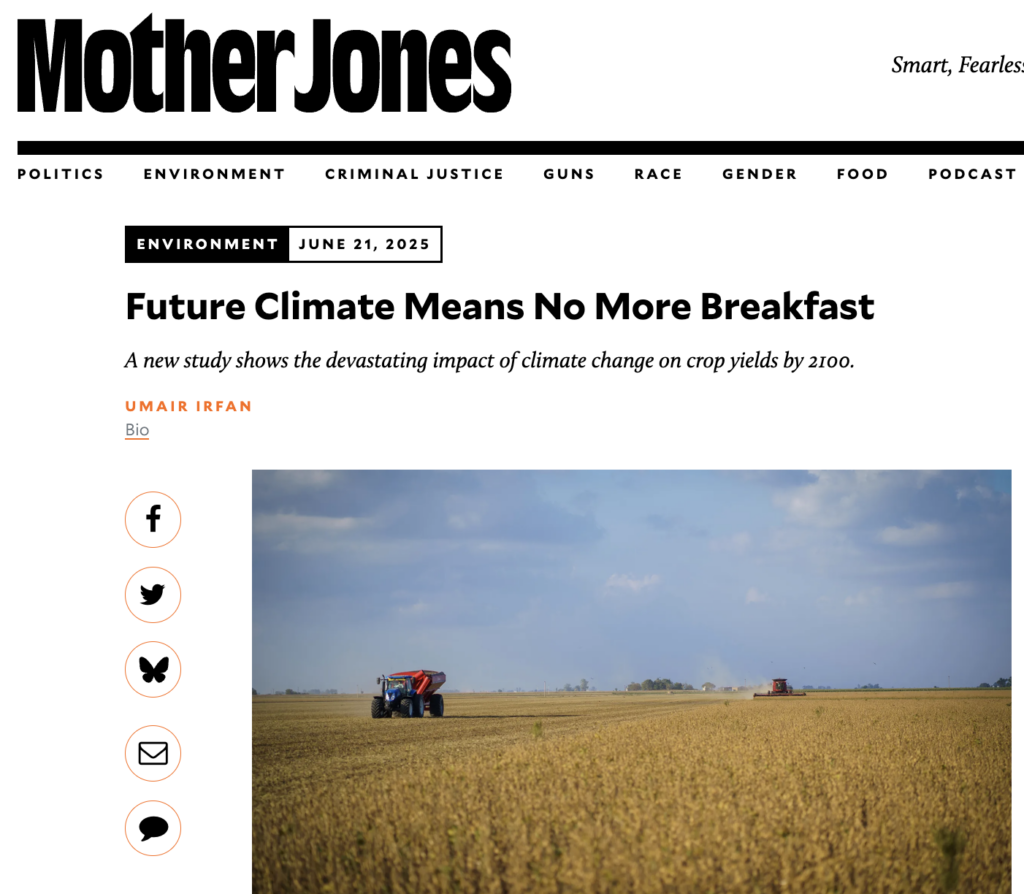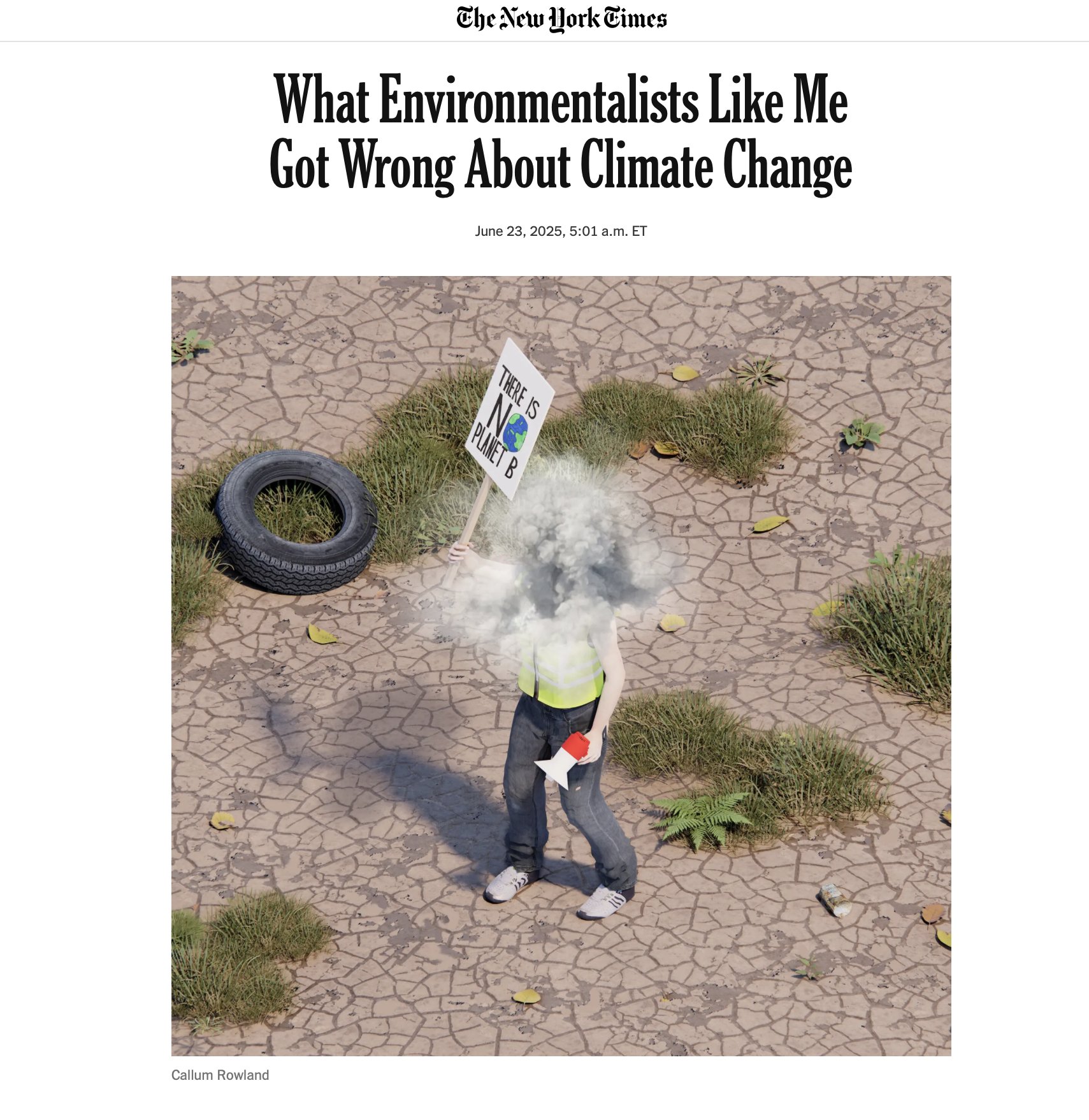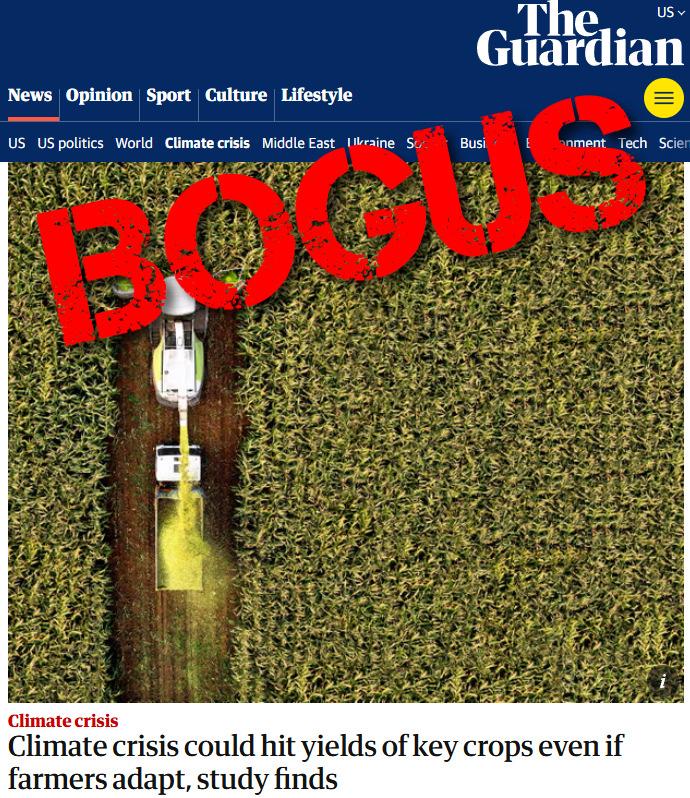By Umair Irfan
Excerpt: A new study shows the devastating impact of climate change on crop yields by 2100.
Globally, humanity is producing more food than ever, but that harvest is concentrated in just a handful of bread baskets.
More than one-third of the world’s wheat and barley exports come from Ukraine and Russia, for example. Some of these highly productive farmlands, including major crop-growing regions in the United States, are on track to see the sharpest drops in harvests due to climate change.
That’s bad news not just for farmers, but also for everyone who eats—especially as it becomes harder and more expensive to feed a more crowded, hungrier world, according to a new study published in the journal Nature.
Under a moderate greenhouse gas emissions scenario, six key staple crops will see an 11.2 percent decline by the end of the century compared to a world without warming, even as farmers try to adapt. And the largest drops aren’t occurring in the poorer, more marginal farmlands, but in places that are already major food producers. These are regions like the US Midwest that have been blessed with good soil and ideal weather for raising staples like maize and soy.
But when that weather is less than ideal, it can drastically reduce agricultural productivity. Extreme weather has already begun to eat into harvests this year: Flooding has destroyed rice in Tajikistan, cucumbers in Spain, and bananas in Australia. Severe storms in the US this spring caused millions of dollars in damages to crops. In past years, severe heat has led to big declines in blueberries, olives, and grapes. And, as the climate changes, rising average temperatures and changing rainfall patterns are poised to diminish yields, while weather events like droughts and floods reaching greater extremes could wipe out harvests more often.
…
And, the decrease in our food production could be devastating: For every degree Celsius of warming, global food production is likely to decline by 120 calories per person per day. That’s even taking into account how climate change can make growing seasons longer and how more carbon dioxide in the atmosphere can encourage plant growth. In the moderate greenhouse gas emissions scenario— leading to between 2 and 3 degrees Celsius of warming by 2100—rising incomes and adaptations would only offset one-third of crop losses around the world.
“Looking at that 3 degrees centigrade warmer [than the year 2000] future corresponds to about a 13 percent loss in daily recommended per capita caloric consumption,” Andrew Hultgren, an agriculture researcher at the University of Illinois Urbana-Champaign, said. “That’s like everyone giving up breakfast … about 360 calories for each person, for each day.”
#




